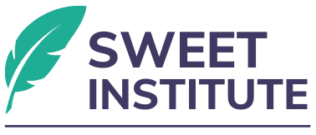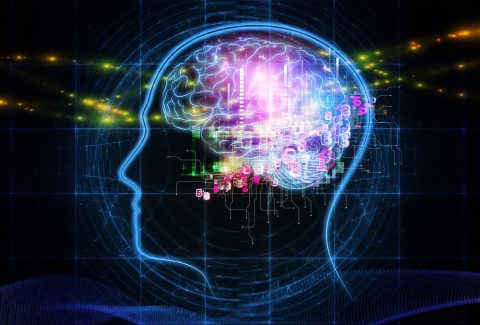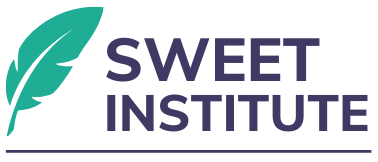The SWEET Model: A Unified Framework for Transformation in Mental Health
Abstract
The SWEET Model is a comprehensive, integrative framework designed to support healing, learning, and sustained transformation in mental health and human development. Drawing on layered transformation theory, psychodynamic principles, cognitive neuroscience, and existential psychology, the model serves as both a clinical and educational tool for mental health professionals. This article explores the theoretical foundations of the SWEET Model, its practical application in clinician continuing education, and its relevance across domains including supervision, leadership, burnout prevention, and therapy. The model’s adaptability across therapeutic modalities, systems of thought, and levels of consciousness demonstrates its potential to unify diverse approaches to mental health and human flourishing.
Keywords
SWEET Model, SWEET Institute, continuing education, transformation, psychotherapy, adult learning, burnout prevention, mental health, consciousness, existential psychology, clinical supervision
Introduction
In an era of growing mental health needs, clinician burnout, fragmented care, and reductionist approaches to learning, the SWEET Model offers a transformative paradigm that unifies science, practice, and purpose. Built upon the four-layered transformation model, the SWEET Model integrates the conscious, preconscious, unconscious, and existential dimensions of human experience. With foundations in neuroscience, psychoanalysis, cognitive psychology, and adult education, it provides a multi-level framework for learning, healing, and transformation (Frankl, 1985; Yalom, 1980; Goleman, 2006; Ebbinghaus, 1885).
Theoretical Framework
The SWEET Model rests on the Four-Layered Transformation framework, which expands Freud’s topographical model (Freud, 1915/1957) by integrating a fourth, existential layer. These four layers offer a structure for understanding and engaging the full spectrum of human experience:
- Conscious: Thoughts, behaviors, and surface-level patterns
- Preconscious: Implicit beliefs, relational models, and assumptions
- Unconscious: Defenses, internal conflicts, core wounds
- Existential: Identity, mortality, purpose, meaning, and transcendence
By aligning therapeutic and educational efforts with the totality of the human experience, the SWEET Model enables clinicians to foster deeper awareness, behavior change, and sustained identity transformation (Siegel, 2007; Frankl, 1985).
Application and Analysis
The SWEET Model is implemented through the SWEET Method—a structured system designed for clinician continuing education. It emphasizes experiential learning, micro-actions, reflective practice, and real-world integration. Applications include:
- Clinician Education: From passive intake to transformation via the SWEET Formula (Why, What, How, Then What)
- Supervision and Coaching: Using the SWEET Paradigm (Socratic Method, Desire Method, Collective Learning, Critical Thinking, Mastery)
- Burnout Prevention: Supporting clinicians through purpose-alignment and reflective practice
- Therapeutic Practice: Applicable across all evidence based practices, including, CBT, DBT, ACT, psychodynamic, Motivational Interviewing, and family systems models
- Leadership and Culture: Transforming systems via whole-person, trauma-informed approaches
This structure encourages clinicians to move from knowledge acquisition to identity-based integration—supporting both clinical effectiveness and personal healing (Kolb, 1984; Mezirow, 1997).
Implications
The SWEET Model has broad implications for how clinicians are trained and how therapy is practiced:
- Enhancing adult learning through experiential engagement (National Training Laboratories, n.d.)
- Building systems of care that integrate purpose, belonging, and growth
- Preventing burnout through inner alignment and transformation
- Serving as a bridge across therapeutic modalities and worldviews
- Creating the conditions for clinicians to teach, model, and live what they practice
Conclusion
The SWEET Model is not just a framework—it is a movement toward whole-person, whole-system healing. Grounded in clinical evidence and ancient wisdom, it redefines mental health education as a path to transformation, not simply information. As mental health care continues to evolve, the SWEET Model offers a foundation for growth across layers of the individual, the system, and the human condition.
References
- Ebbinghaus, H. (1885). Über das Gedächtnis [On memory].
- Frankl, V. E. (1985). Man’s search for meaning. Beacon Press.
- Freud, S. (1957). The unconscious. In J. Strachey (Ed. & Trans.), The Standard Edition of the Complete Psychological Works of Sigmund Freud (Vol. 14, pp. 159–204). (Original work published 1915)
- Goleman, D. (2006). Emotional intelligence. Bantam.
- Kolb, D. A. (1984). Experiential learning: Experience as the source of learning and development. Prentice-Hall.
- Mezirow, J. (1997). Transformative learning: Theory to practice. New Directions for Adult and Continuing Education, (74), 5–12.
- National Training Laboratories. (n.d.). Learning pyramid—retention rates.
- Siegel, D. J. (2007). The mindful brain: Reflection and attunement in the cultivation of well-being. W. W. Norton.
- Yalom, I. D. (1980). Existential psychotherapy. Basic Books.







